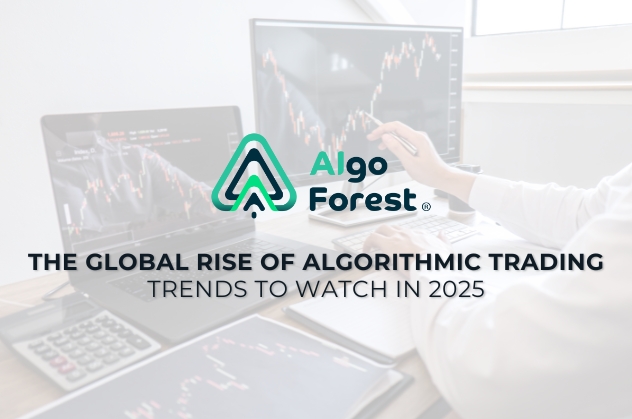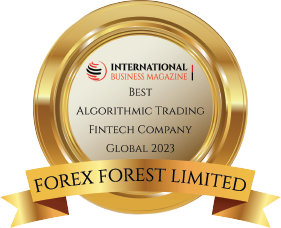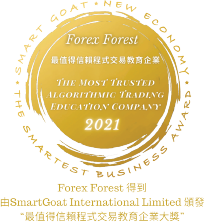


Algorithmic trading once reserved for elite hedge funds and Wall Street quants is now going mainstream. In 2025, more traders around the world are adopting AI-driven algorithmic trading to navigate the markets with precision, speed, and confidence.
This shift marks one of the most exciting evolutions in modern finance: the democratization of algorithmic trading. What used to be accessible only to institutions with million-dollar infrastructure is now available to everyday traders, often with just a few clicks.
So, what’s fueling this rapid rise, and what trends should traders watch in 2025?
Ten years ago, setting up an algorithmic trading system required deep programming knowledge and expensive data feeds. Today, retail traders can install bots directly onto platforms like MetaTrader 4 (MT4) or MetaTrader 5 (MT5) in minutes.
This democratization has made algo trading less intimidating and far more approachable for beginners.
The growth of retail algorithmic trading isn’t confined to one market but it’s happening worldwide.
The global adoption curve shows that automation isn’t just a trend but the new normal for trading.
The rise of artificial intelligence (AI) in finance has given algorithmic trading a major boost. Unlike static strategies, AI-powered bots can learn, adapt, and optimize in real time.
For example, Algo Forest’s SMA combines currency strength detection with adaptive position sizing. This type of AI integration ensures strategies aren’t rigid. They evolve with the market.
By 2025, expect AI-powered expert advisors to dominate retail algo trading, providing traders with tools that rival institutional-grade solutions.
One of the biggest psychological shifts among retail traders is the move away from manual, emotion-driven trading. Human traders are often influenced by fear and greed, leading to inconsistent results.
Algorithms, on the other hand:
This mindset shift is fueling adoption as more traders realize that automation isn’t about replacing them and empowering them.
For automation to gain trust, risk management is key. In 2025, the most successful algorithmic systems are those that prioritize capital protection.
At Algo Forest, products like BED indicator (Balance, Equity & Drawdown) allow traders to monitor risk in real time, while tools such as Dragon Wave undergo tens of thousands of backtests before release.
This focus on transparency and safety ensures retail traders can embrace automation with confidence.
Looking Ahead: The Future of Retail Algo Trading
The rise of retail algorithmic trading isn’t slowing down. With AI advancing, regulations catching up, and platforms becoming more user-friendly, 2025 is shaping up to be a watershed year for everyday traders.
As Wayne Ng, Founder of Algo Forest, often says: “The future of finance lies in automation, precision, and accessibility. Our mission is to bridge the gap between technology and traders everywhere.”
For traders considering automation, the message is clear: the earlier you embrace it, the more equipped you’ll be for the future of trading.
Conclusion & Invitation
Algorithmic trading is no longer the future. It’s the present. As 2025 unfolds, retail traders around the world are embracing automation to level the playing field with institutions. The combination of AI, accessibility, and global adoption is making this the most exciting time in history to be part of algorithmic trading.
And we’re bringing this future to life at Forex Expo Dubai 2025.
Join Algo Forest Group (Forex Forest & Algo Forest) at Forex Expo Dubai 2025!
We’ll be showcasing our latest AI Signals Page along with our most advanced Expert Advisors, designed to transform the way retail traders engage with the markets.
If you can’t see us in Dubai, you can also explore our algorithmic trading courses available on algoforest.com.
Algorithmic trading once reserved for elite hedge funds and Wall Street quants is now going...
LEARN MORE >>Invited to landmark meeting with Abu Dhabi Investment Office, as its Forex Forest ecosystem empowers...
LEARN MORE >>外汇小课堂:外汇交易如何运作︖了解外汇交易的基本原理 外汇交易作为全球交易量最大、流动性最高的金融市场之一,每天的交易总额高达 6.6 兆美元,吸引了无数投资者参与。然而,对于许多外汇新手来说,外汇到底是怎么运作的?是否真的如传说中那般高风险、难以掌握? 本文将带您逐步了解外汇市场的基本架构和操作方式,帮您扫清学习过程中的疑惑。不论您是初学者还是稍有经验的交易者,都可以从本文中获得实用的信息与策略。 外汇交易的基本原理是什麼︖ 外汇交易的核心是「以一种货币兑换另一种货币」,也就是所谓的「货币对」。例如 EUR/USD(欧元/美元)代表购买一欧元所需的美元数。 每种货币都有其标准缩写,例如 EUR 是欧元、USD 是美元。通过查看这些货币对的价格,交易者可以判断当前汇率,并作出买入或卖出的决策。 外汇价格由市场供需决定,全天候波动,因此也为交易者提供了众多机会。 📌 实用小贴士:可通过连接至权威外汇网站查看实时汇率。...
LEARN MORE >>




